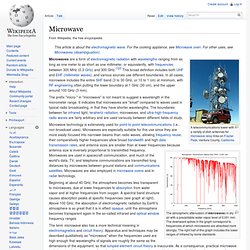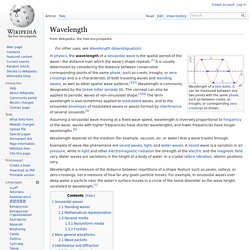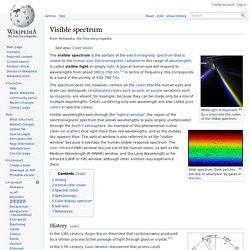

Munsell color system. The Munsell color system, showing: a circle of hues at value 5 chroma 6; the neutral values from 0 to 10; and the chromas of purple-blue (5PB) at value 5.

Several earlier color order systems had placed colors into a three-dimensional color solid of one form or another, but Munsell was the first to separate hue, value, and chroma into perceptually uniform and independent dimensions, and was the first to systematically illustrate the colors in three-dimensional space.[1] Munsell’s system, particularly the later renotations, is based on rigorous measurements of human subjects’ visual responses to color, putting it on a firm experimental scientific basis.
Because of this basis in human visual perception, Munsell’s system has outlasted its contemporary color models, and though it has been superseded for some uses by models such as CIELAB (L*a*b*) and CIECAM02, it is still in wide use today.[2] Explanation[edit] Munsell’s color sphere, 1900. Hue[edit] Value[edit] Chroma[edit] Professor Albert H. Microwave. The atmospheric attenuation of microwaves in dry air with a precipitable water vapor level of 0.001 mm.

The downward spikes in the graph correspond to frequencies at which microwaves are absorbed more strongly. The right half of this graph includes the lower ranges of infrared by some standards Microwaves are a form of electromagnetic radiation with wavelengths ranging from as long as one meter to as short as one millimeter, or equivalently, with frequencies between 300 MHz (0.3 GHz) and 300 GHz.[1][2] This broad definition includes both UHF and EHF (millimeter waves), and various sources use different boundaries. In all cases, microwave includes the entire SHF band (3 to 30 GHz, or 10 to 1 cm) at minimum, with RF engineering often putting the lower boundary at 1 GHz (30 cm), and the upper around 100 GHz (3 mm). The prefix "micro-" in "microwave" is not meant to suggest a wavelength in the micrometer range. Microwave sources[edit] Radio waves. Wavelength. Assuming a sinusoidal wave moving at a fixed wave speed, wavelength is inversely proportional to frequency of the wave: waves with higher frequencies have shorter wavelengths, and lower frequencies have longer wavelengths.[6]

Electromagnetic radiation. The electromagnetic waves that compose electromagnetic radiation can be imagined as a self-propagating transverse oscillating wave of electric and magnetic fields.

This diagram shows a plane linearly polarized EMR wave propagating from left to right. The electric field is in a vertical plane and the magnetic field in a horizontal plane. The two types of fields in EMR waves are always in phase with each other with a fixed ratio of electric to magnetic field intensity. Electromagnetic radiation (EM radiation or EMR) is a form of radiant energy, propagating through space via electromagnetic waves and/or particles called photons. In a vacuum, it propagates at a characteristic speed, the speed of light, normally in straight lines.
In classical physics, EMR is considered to be produced when charged particles are accelerated by forces acting on them. Terahertz radiation. Terahertz waves lie at the far end of the infrared band, just before the start of the microwave band.

In physics, terahertz radiation, also called submillimeter radiation, terahertz waves, tremendously high frequency,[1] T-rays, T-waves, T-light, T-lux, or THz, are electromagnetic waves within the ITU-designated band of frequencies from 0.3 to 3 terahertz (THz). The term applies to electromagnetic radiation with frequencies between the high-frequency edge of the millimeter wave band, 300 gigahertz (3×1011 Hz), and the low frequency edge of the far-infrared light band, 3000 GHz (3×1012 Hz). Corresponding wavelengths of radiation in this band range from 1 mm to 0.1 mm (or 100 μm) Colour Music. Visible spectrum. Solar spectrum.

Dark patches are due to absorption by gases in the Sun. The visible spectrum is the portion of the electromagnetic spectrum that is visible to the human eye. Electromagnetic radiation in this range of wavelengths is called visible light or simply light. A typical human eye will respond to wavelengths from about 390 to 700 nm.[1] In terms of frequency, this corresponds to a band in the vicinity of 430–790 THz.
Munsell_1929_color_solid_transparent. Roy G. Biv. The conventional seven colors of the rainbow symbol Natural rainbows show a continuum of colors.

A rainbow spans a continuous spectrum of colors; the distinct bands are an artifact of human color vision. In Roy G. Biv, the colors are arranged in the order of decreasing wavelengths, with red being 650 nm and violet being about 400 nm. The Roy G. History[edit] Newton's color wheel that introduced indigo as a basic color. Newton's observation of prismatic colors. In Classical Antiquity, Aristotle claimed there was a fundamental scale of seven basic colors. The Munsell color system, the first formal color notation system (1905), names only five "principal hues": red, yellow, green, blue, and purple (although note that Munsell's purple is not a spectral hue). Another traditional mnemonic device has been to turn the initial letters of seven spectral colors into a sentence. In popular culture[edit] Fiction and Books[edit]